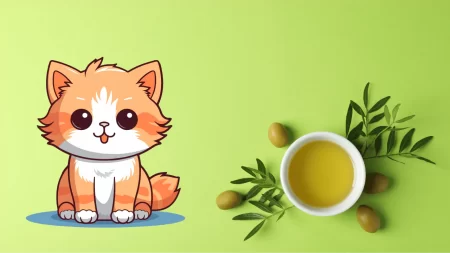Decoding the label is crucial when selecting cat food to ensure the optimal choice for your feline companion.
Consider the following elements on a cat food label:
- Ingredients: The primary ingredient holds the greatest significance, demanding attention. Cats are obligate carnivores, relying on meat for survival. Hence, the foremost ingredient should be a meat protein like chicken, beef, or turkey.
- Guaranteed Analysis: This section lists the minimum and maximum nutrient percentages in the food. Prioritize foods with a high protein percentage and low carbohydrate content.
- Nutritional Adequacy Statement: The manufacturer’s guarantee that the food meets cats’ nutritional requirements is found in the nutritional adequacy statement. Seek out foods with an AAFCO (Association of American Feed Control Officials) nutritional adequacy statement.
What is the best way to store cat food?
Here are some points you need to know:
- Store dry cat food in a cool, dry place below 100°F (38°C) to maintain its nutrients and freshness.
- Use the original bag or a sealed container like a metal bin to store dry cat food and prevent infestations.
- Avoid storing dry cat food on the ground or in a garage to protect it from heat, moisture, and pests.
- Refrigerate opened cans of cat food in a sealed container and discard leftovers after a few days.
- Keep unopened cans of cat food in a cool, dry place and check the expiration date before serving.
- Clean and dry food bowls and utensils after each use, and wash water bowls daily to prevent contamination.
What are some common mistakes people make when feeding their cats?
Here are some common mistakes people make when feeding their cats:
- Feeding too much food.
- Feeding a diet that is not nutritionally balanced.
- Feeding only dry food.
- Feeding table scraps.
- Not providing fresh water.
- Feeding human food.
- Feeding unbalanced homemade diets.
- Feeding a plant-based diet.
What should I do if my cat has a food allergy?
If your cat has a food allergy, there are a few things you can do to help them.
- A food allergy is an adverse reaction that occurs when your cat’s immune system overreacts to a specific protein in food. Your cat must have been exposed to that protein before to develop an allergy to it.
- The most common symptom of a food allergy in cats is constant itching that does not change seasonally. Your cat may also lick, scratch, overgroom, bite, or develop skin lesions or infections. Less commonly, your cat may have vomiting or diarrhea.
- The most common foods that cause allergies in cats are beef, fish, chicken, and dairy. However, any food can cause an allergy and it may vary depending on your cat’s previous diet.
- The best way to diagnose a food allergy is to do an elimination diet trial. This means feeding your cat a hypoallergenic diet that contains a protein source that your cat has never eaten before for 8 to 12 weeks and observing for improvement of symptoms. You should consult with your veterinarian before starting an elimination diet trial and follow their instructions carefully.
- If your cat’s symptoms improve on the hypoallergenic diet, you can reintroduce the old diet to see if the symptoms return. If they do, you can confirm that your cat has a food allergy and identify the offending ingredient by introducing one ingredient at a time every 2 weeks and monitoring for reactions.
- The best way to treat a food allergy is to avoid the allergen completely. You should feed your cat a balanced and complete diet that does not contain the allergen and check the labels of any treats or supplements you give your cat. You should also avoid cross-contamination by washing and drying your cat’s food bowls and utensils after each use.
Do cat food labels always provide accurate information about the ingredients?
No, cat food labels do not always provide accurate information about the ingredients.
A study conducted by Chapman University revealed that 40% of pet food products were incorrectly labeled.
The primary form of mislabeling observed was the exclusion of ingredients, closely followed by the inaccurate representation of ingredients.
Inaccurate cat food labels can be attributed to several factors. One factor is the manufacturers’ desire to cut costs by utilizing cheaper ingredients.
Additionally, manufacturers may attempt to enhance the attractiveness of their products to consumers by including ingredients that are not present in the actual food.
Do cat food labels disclose the sources of animal proteins used in the product?
Yes, cat food labels are required to disclose the sources of animal proteins used in the product.
The ingredients must be listed in descending order by weight, so the first ingredient is usually the most prominent source of protein.
Common sources of animal protein in cat food include:
- Beef
- Chicken
- Turkey
- Lamb
- Fish
- Eggs
- Dairy
Do cat food labels indicate the specific amounts of essential nutrients present in the product?
Yes, cat food labels are required to indicate the specific amounts of essential nutrients present in the product.
This is known as the “Guaranteed Analysis“, which is a requirement set by the Association of American Feed Control Officials (AAFCO).
The guaranteed analysis presents a table that outlines the minimum and maximum percentages of protein, fat, moisture, fiber, and ash present in the food.
Alongside the guaranteed analysis, labels on cat food may also provide details about other essential nutrients like taurine, vitamin A, and vitamin B12, which are necessary for a well-balanced diet for cats.
It’s important to remember that the guaranteed analysis represents a range of minimum and maximum values, and the actual nutrient composition of the food might differ.
Can understanding cat food labels aid in identifying the presence of artificial colors or flavors?
Yes, understanding cat food labels can help in identifying the presence of artificial colors or flavors.
Artificial colors and flavors are typically listed in the ingredient list after the natural ingredients.
They are often listed as FD&C colors or artificial flavors.
Here are some examples of artificial colors and flavors:
- FD&C Red 40
- FD&C Yellow 5
- FD&C Blue 1
- Artificial Bacon Flavor
- Artificial Chicken Flavor
If you see any of these ingredients on the label, it is a good indication that the food contains artificial colors or flavors.
It is important to note that artificial colors and flavors are not necessarily harmful to cats.
However, some cats may be sensitive to them and may experience adverse reactions, such as vomiting, diarrhea, or skin irritation.
If your cat is sensitive to artificial colors or flavors, it is best to avoid foods that contain them.







